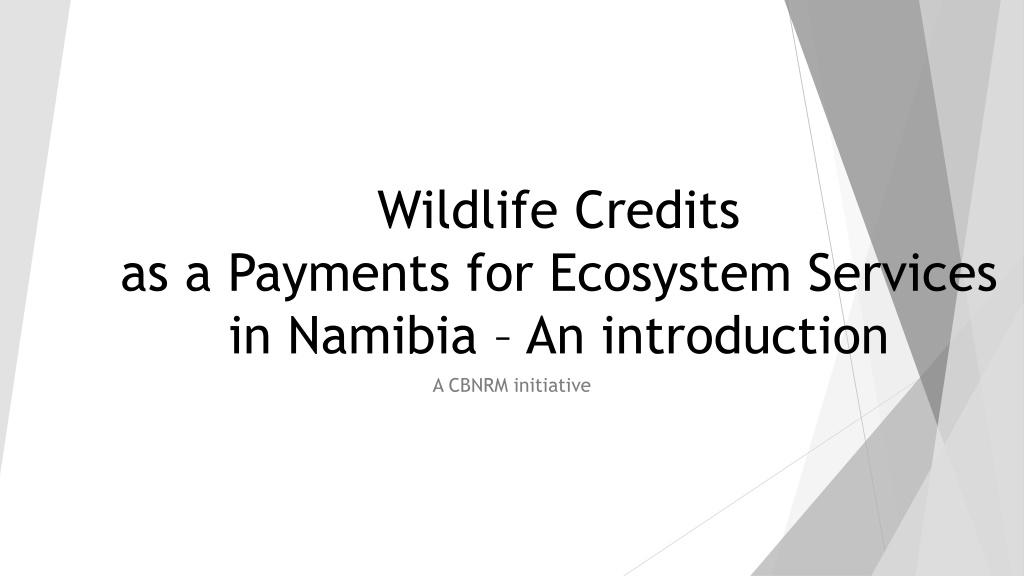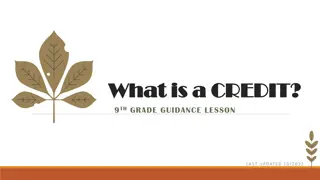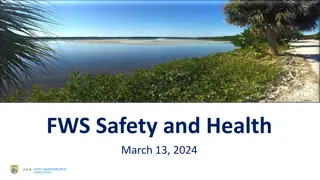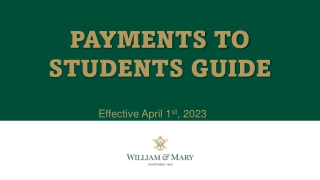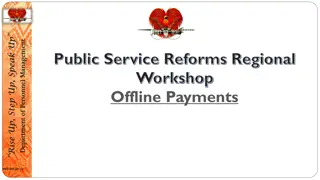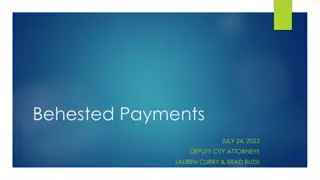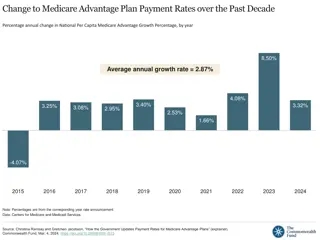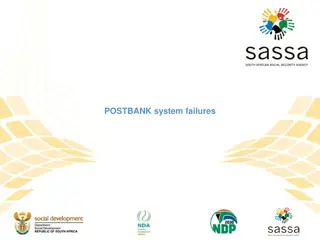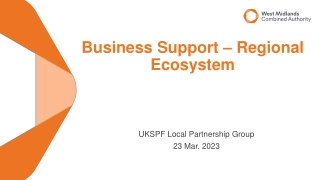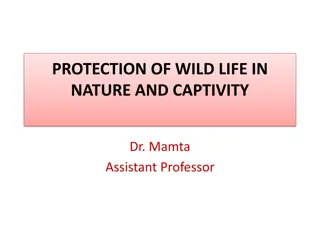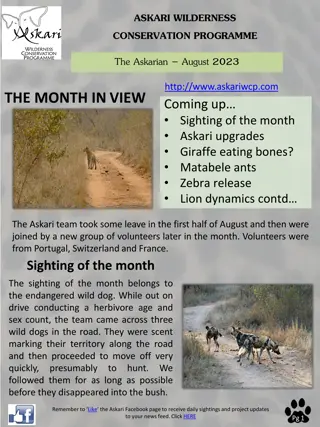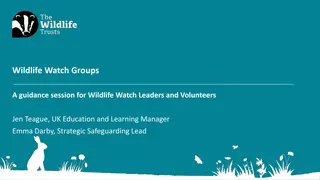Exploring Wildlife Credits: Payments for Ecosystem Services in Namibia
Delve into the innovative concept of Wildlife Credits in Namibia, a unique initiative that rewards conservation efforts. Learn about the Community Conservation Fund of Namibia (CCFN) and its role in promoting sustainable practices. Discover the impact on wildlife zones, corridors, and breeding habitats, and how communities benefit through exclusive wildlife areas. Explore the management performance indicators and an example of Wildlife Credits in action, specifically focusing on lion conservation in the Kunene region.
Download Presentation
Please find below an Image/Link to download the presentation.
The content on the website is provided AS IS for your information and personal use only. It may not be sold, licensed, or shared on other websites without obtaining consent from the author. Download presentation by click this link. If you encounter any issues during the download, it is possible that the publisher has removed the file from their server.
Presentation Transcript
Wildlife Credits as a Payments for Ecosystem Services in Namibia An introduction A CBNRM initiative
Mr. Tapiwa. A. M. Makiwa Community Conservation Fund of Namibia (CCFN)- CEO Consortium of African Funds for the Environment (CAFE) - VP ceo@ccf-namibia.org www.ccf-namibia.org
Total Conservation Statistics +/-21% - National Parks +/-21% - Community Based +/- 42% total country CBNRM CCFN and other organizations 86 conservancies, 45 comm forests About 220 000 residents 16mil ha of comm conservation land Contrasting beautiful Namibia , varied eco-systems
Species Performance: i. Species Density/Index ii. Calving / Breeding Nr. iii. Species Presence Habitat Integrity: i. Wildlife Zones ii. Wildlife Corridors iii. Breeding habitats Management Performance i. Poaching Nr. ii. Patrolling Effort iii. Patrolling Sighting PES Wildlife Credits EXAMPLE WILDLIFE CREDITS Species Products Species Products (Bio (Bio- -diversity Richness) diversity Richness) Product Product Type Exclusive Wildlife Areas Habitat Integrity Product Nr. 15 Wildlife Wildlife Landscape Landscape (Base Payment) (Base Payment) Communities foreclose land use options such as settlement and cropping on their land that resident are dependent on for their livelihoods. Also Rationale Every ha of exclusive wildlife area set aside in the zonation plans of conservancies would have a $ value per year. The more ha set aside and managed for wildlife by the conservancy the more they get paid. Settlement and cropping and this can be monitored annually by satellite imagery. If there is no interference then payment. Business Model Kunene Kunene Lions Lions (Lion Days) (Lion Days) Means of Verification (principle of demonstratable) Wildlife Wildlife Sightings Sightings Pricing Strategy Unit Total Due 4,000,000 Payment Due 3,000,000 Unit # $ per Unit Performance Description Hectares Pricing Example Chobe Chobe Lions Lions 4 million 1 75% Conservation Landscape Conservation Landscape (Exclusive Wildlife Areas) (Exclusive Wildlife Areas) Wildlife Wildlife Corridors Corridors Criteria for Success High: important buffer zones to NP and important economic value Conservation value High : Use of IT and AI Verification confidence Kunene Kunene Elephants Elephants Good opportunity re 30x30. Needs to be tested Market attractiveness Depends on the value of payment made. Needs to be tested Incentives conservation Verification automated so should be affordable. Doable and Affordable Key species presence
Wildlife Credits: Illustration of Pricing Mechanism for Wildlife Areas and Related Species Products Base Payment Bonus Payment 1. Calcuation of the the size of wildlife area in Ha 3. Biodiversity Richness 4. Key species presence 2. Proxy Value / Ha 3.1. Biodiversity Index 2.1. Animal production Potential (livestock/wildlife) 4.1 IUCN Threatened Species It is calculated using the IUCN Threatened Species list x 2% per species on Base Payment. It is calculated using the Plant Endemism & Diversity ranking as a total biodiversity score. It is calculated using the Carrying Capacity Category (animal biomass per ha) x the average price of meat. This allows to get a % metric which tells as how much of the maximum ranking level is identified in this area. Based on this, the Biodiversity Index corrects the proxy value with a factor of 1.25, 1 or 0.75 The actual production of animals (live mass) is derived and followed by a correction for the dressed weight. To determine the species present, the conservancy uses camera traps and SMART app to record and provide evidence of presence. Note: Proxy value is a value that is not directly relevant, but that serves in place of an unobservable or immeasurable value. For it to be a good proxy value, it must have a close correlation with the product of interest
Wildlife Credits: Wild Landscape Business Model Blended Approach 1 Wildlife Stewards 1 Conservancies Performance Phase 2 Review & Payment Purchase of WC Certficate Payments 3 Secondary Market Investors / Donors / Payers Thriving Wildlife and Intact Wildlife Habitat CCFN : Grant Investments 3 Deloitte AI Perf. Dashboard Coninfo ESG Data Dashboard Wadappt WC Certificate Platforms 2 Satellite Images, Camera Traps, Smart App, Eventbook data Data
QUESTIONS Mr. Tapiwa. A. M. Makiwa Community Conservation Fund of Namibia (CCFN)- CEO ceo@ccf-namibia.org www.ccf-namibia.org
